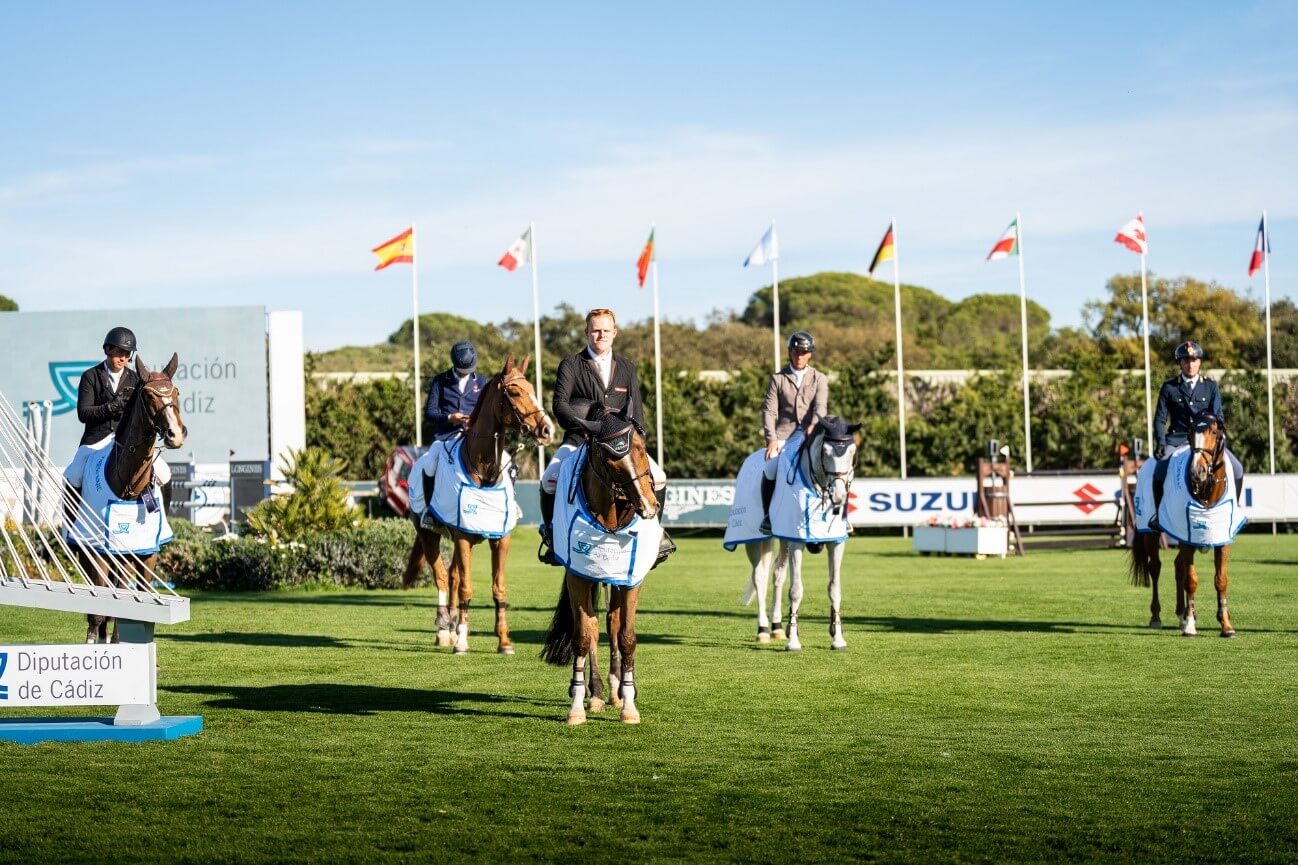
Should there be a maximum faults rule?
Having a set amount of faults during a show jumping competition could be beneficial for horse and rider combinations. Should riders face elimination if they surpass a certain limit?
The Olympic format
Recently, the Olympic Team Show Jumping format has changed from being able to have four members to a three-rider combination. This means all three riders have to perform outstandingly well, and there is no room for error if they don’t want the whole team to be disqualified.
However, this new format has brought controversy as many elite riders believe it creates a horse welfare issue. When there is no space for a drop score, all three riders must complete the course, as otherwise they would be eliminated. This pressure was seen at the 2020 Tokyo Games with Irish star Shane Sweetnam.
As the first in the ring for Ireland, Sweetnam and Alejandro started with the wrong foot, and they pulled a front shoe at the first element of the triple combination. As they progressed in the course, the horse became more unhinged. By fence nine, the horse paddled and both fell to the ground.
Despite Sweetnam’s talent, he took heavy criticism for his decision to continue. However, others blamed the format. Nick Skelton stated to World of Show Jumping that Shane Sweetnam was not at fault, as he had to get the round or his country would lose all chance, and this did not look good on TV.
Proposed maximum fault rule
Since then, debate has spread on social media and now many propose a maximum fault rule to preserve show jumping. A few years ago, a proposal to the FEI (International Equestrian Federation) suggested that 16 faults should result in elimination, and while at that time the idea did not gain traction, now several people are starting to ask themselves if this could be a good idea.
If there was a fault limit, perhaps the modern pentathlon at Tokyo 2020 incident could have been minimized. The round by Annika Schleu and poor display of horsemanship by her trainer in the show jumping phase was one of the most controversial issues of the Games. As a result, horse riding has been removed from this sport that has been ongoing since 1912.
Now, horse riding is likely to never be reinstated in modern pentathlon again. Likewise, if there are many mistakes in other equestrian sports, social controversy could cause these sports to disappear as Olympic disciplines. Also, we have to take into account how horse sports is perceived by the public audience.
As an example, Andy Kocher won the 1.60m ATCO Queen Elizabeth II Cup with Carollo at the 2019 Spruce Meadows Derby. A day afterwards, in the 1.45m Derby, the pair collected 28 faults. This sparked outrage online and reflected poorly on this sport. People debate that if there was a maximum faults rule, this could have been prevented.
It can benefit show jumpers
A maximum fault rule also applies to your horse. Sometimes, show jumping rounds can go poorly for several factors, and the most serious involve the horse getting injured. If the horse is having a poor performance in the ring, there might be a physical reason behind its hindering, and stopping to evaluate the horse is essential.
Some people argue it is the rider’s duty to know whether their horse is potentially hurt or not. And while education is critical, when adrenaline is running in the ring, it is not always simple to make these distinctions. Many top riders will pull up if they notice, but that is not always the case.
Also, it can be discussed that knocking four or more rails is not desirable in a course of 10-14 efforts. Current rules for show jumping include:
- USEF rule JP136.7 Setting a Standard. After the first round of the first class in any section, management or the judges may order a competitor from the ring when it becomes evident that their performance prohibits them from being in the ribbons.
- FEI Article 241 3.26. if the Ground Jury feels that for any reason Horse or Athlete is unfit to continue in Competition;
While they are interesting, they can be considered to be flawed. For the USEF rule, we can debate that horse shows are big business, and management is not going to eliminate a rider because they are out of the top 10. On the other hand, the FEI rule makes more sense, but it puts judges in a difficult spot. Taking a decision in the 72-odd seconds the rider is on the course is unrealistic.
These rules are too subjective and put the judge at a difficult spot. They enforce the rulebook, and if they fall into the gray area of personal opinion, they may be out of job and potentially worse, facing a lawsuit.
How could a fault limit be implemented?
Members of the equestrian community suggest this rule proposal should apply to certain levels and not others. For instance, young horse classes or junior/amateur classes should not have a limit. At FEI Grand Prix level, 20+ fauls should result in elimination.
Other people however suggest that 20 faults are too many, and this number should be lower. This all is still suggested by members of the equestrian community and there has still not been any steps from FEI to do these changes.
In an idyllic world, we would not need an elimination rule after a certain number of mistakes, but in order to put horse’s welfare first, it might be a rule we need now to support good sportsmanship and the future of show jumping.
What do you think about the maximum faults rule? We invite you to share your thoughts on our social media: we are on Facebook, Instagram and Twitter.
Images from FEI












_v2.svg)
_v2.svg)









_v2.svg)


